
These devices have been designed primarily to solve those problems caused by network performance , which are caused by bottlenecks and small bandwidths .
This is how these devices have been created to add more bandwidth, reduce waiting times, reduce costs per port and accelerate packet output, among many other problems that they are generated frequently on the network.
Similarly, it serves to connect different elements within the same network, whether computers, Smart TV, printers, consoles, or any other device that has a WiFi card or Ethernet . With all this in mind, here we will explain a little more what they are and what these devices are used for today.
Index:
What is a Switch and what is this hardware for in a computer network ?
These devices are frequently used in most large companies where they need to have a Switch per floor so that it can carry out the interconnection between the different teams . It is also often used in some homes to improve the performance of the home network.
It is also important to mention that although these devices have undergone several technological advances, their operation remains the same, but this has made every day more difficult to configure.
Therefore, this device is mainly used for what is the interconnection of several devices in the same network. This can be done when the equipment emits a message and the Switch takes care of taking it and transmitting them only by the exit where the target is located.
For this, this hardware takes what is the physical address of the network card also known as MAC , in case there are different Switch they all communicate each other to know where they have to send the data . In this way, this device has been created primarily to facilitate communication between different teams .
Router vs Switch What are the differences between the two?
In general, most people usually refer to these two teams as if they were the same, but the reality is different, although both perform similar functions each of them It differs in its functionality. This is how the Router is able to cover the same functions as the Switch and many more .
In the case of the Switch it is mainly responsible for interconnects the computers, while the Routers have as their main function power connect all these computers to an Internet network. Therefore, here we show you the main differences between both devices.
Switch

In the case of this device, it is to send information from the source computer to the other destination computers . Where basically they are responsible for creating what is a kind of communication channel between the origin and the destination , preventing the network from being limited to a single sending team.
This device makes the network always working since communication will always be available , except when two or more computers are sending simultaneous data to the same machine.
It is also designed to work on networks that have a large number of connected machines . In the same way is responsible for filtering and forwarding packets between fragments over the LAN .
Router

While the Router has the main function of being able to forward all packets between the different available networks . You can say that this device is much more advanced and smarter than the Switch, performing the same functions that it performs.
They are also specialized to be able to choose the best route so that packages can reach their destination safely. In the same way, these devices are capable of interconnecting several networks , working together with the switches. Unlike this one, the routers have extra resources such as the firewall .
Usually, these devices usually connect at least two networks, which are often one of WAN connection and a LAN . To do this, use routing tables and headers to determine the best path for the connection. It can be said that always chooses the easiest way to send the information. Basically, this equipment uses the same functions as the switches and adds new functions.
What are the main features of a network switch?
These devices have a number of important features that make them work correctly . Therefore, here we explain what each of them are.
The ports
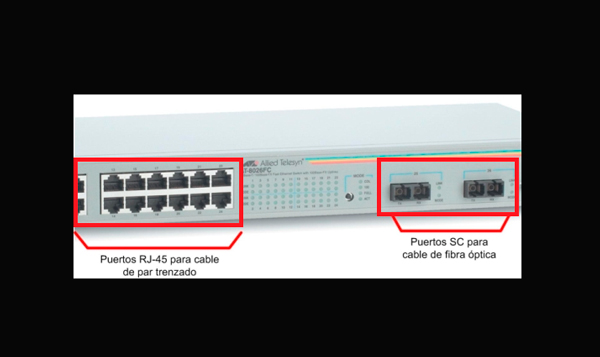
The ports are one of the most important elements of these network switches, since from them the connection to other devices is made , such as a router, a laptop, a PC or even another switch . Basically, you can connect any device that has an interface to an Ethernet network.
Therefore, port numbers are one of the most important features of these devices, where some have 4 ports , while others can reach admit a lot of them . This will depend on the capacity of the equipment.
Usually, the basic switches only have twisted cable ports , while the more advanced have ports fiber optic . Taking into account that Ethernet networks have two types of transmission , either by twisted cable or by means of the fiber optic cable .
Speed
Given that ethernet networks have several speeds and transmission media , the ports of this device indicate the speed at which you can work on a specific transmission medium >. Therefore, each of these ports can be classified according to their speed , this is how some of them are defined as 10/100, where they work under the following standards:
- 10 BASE-T: Speeds of 10 Mbps.
- 100BASE-TX: Speeds of 100 Mbps.
You can also get ports with 10/100/1000 standards which add the following speeds:
- 1000 BASE-T: Speeds of 1000 Mbps.
Other ports that can be obtained are those that use fiber optic which use female connectors of some form of fiber optic, which They have the following standards:
- 100 BASE-TX: Speeds of 100 Mbps.
- 1000 BASE-T: Speeds of 1000 Mbps.
Finally, we find the high-performance switches that can offer ports that have 10 GbE standards , both from UTP cable and fiber optic cable .
Modular ports: GBIC and SFP 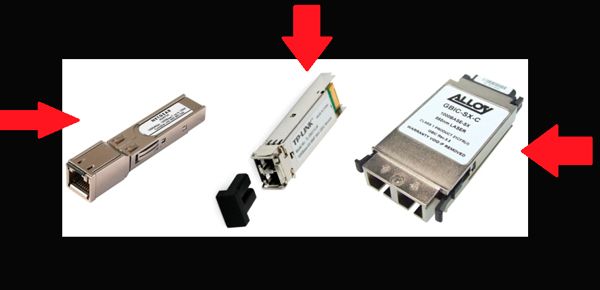
We also find what are modular ports , these are mainly found in the mid-range and high-end switches . They do not have any specific type of connector , but are able to connect a module that contains the port.
This allows to adapt the port to the type of medium and speed required . That is why in the market we can find modules with different RJ-45 or fiber optic connectors. In addition, you can find two types of modules to connect the modular ports .
The first of these is a GBIC module , it has been designed to offer greater flexibility in choosing the transmission medium for Gigabit Ethernet. The second is the SFP module, is much smaller than the previous one and is used by manufacturers to offer the s both Gigabit and 10 GbE modules in UTP cable or fiber optic .
Power Over Ethernet
This is a technology known as PoE , which allows what is the sending of power along with the wiring data of an ethernet network . This allows to provide power to devices connected to an Ethernet network. That is, a device that supports PoE technology can obtain data such as power from the cable connected to the network.
Typically, this technology is used by devices such as IP video cameras, remote switches, VoIP phones, WiFi wireless access points, among some other devices that have access to a Ethernet network . They are characterized by not having a high energy consumption, nor a physical location that complicates the wiring installation .
What are the types of switches that currently exist and which is better?
There are currently different types of switches in the market , each of them is used in different ways, that is why we will explain each of these types and their main features .
Desktop switches
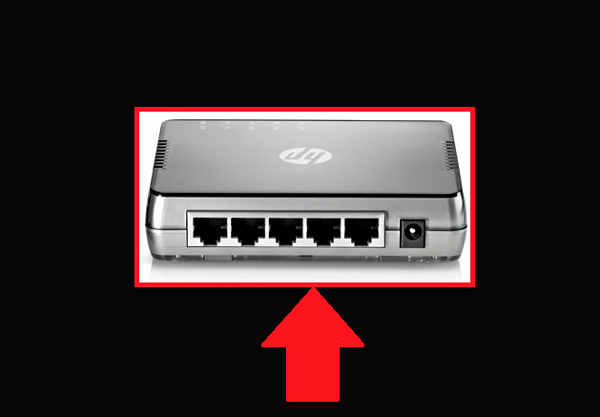
Considered today as the most basic of all , which offers the function of basic switching where there is no additional feature >. It is mainly used for what are small businesses or networks domestic that require a interconnection of few computers .
Being a very basic and simple equipment does not require a configuration for its use. They have a autoconfiguration option where you configure each of the ports alone.
Among the most important features are the following:
- The most recent switches have features Auto MDI / MDI-X .
- The port configuration supports the 10BASE-T and 100BASE standards -TX .
- It has a port number that goes from 4 to 8 RJ-45 ports .
Unmanageable perimeter switches
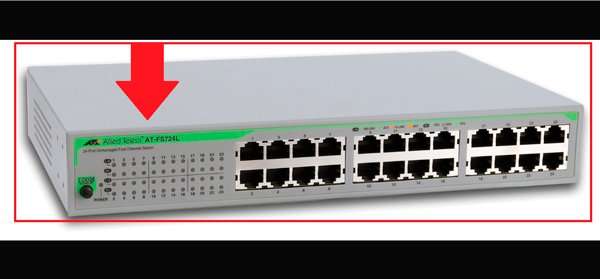
They are mainly used for what is the design of small-sized networks of medium performance. They do not require any configuration and have very important features that help make their operation much better. In addition, it has a large number of port numbers and offers the possibility of rack mount 19 ” .
With this in mind, here we show you its main features:
- It usually has a number of ports ranging from 4 to 24, and can only be 4, 8, 16 or 24 ports .
- In some cases, they offer additional ports that perform better than other existing ports .
- These ports are usually 10/100 RJ-45 , which accept Auto MDI / MDI-X and autonegotiation. There are also some model ports 10/100/1000.
- We can also find unmanageable models that offer Power Over Ethernet PoE .
Manageable perimeter switches
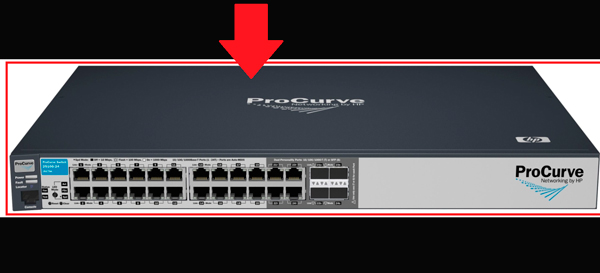
Manageable perimeter switches are mainly used for the connection between users’ computers in medium and large networks . Typically, these are located at the lower hierarchical level . Typically, these types usually offer tools advanced configuration and management .
In this way, we explain its main features:
- It has a number of ports ranging from 16 to 48 .
- It also includes additional ports with higher performance GBIC or SFP >, which allows the connection of a trunk switch .
- It has models of ports 10/100 and others with ports 10 / 100/1000 , everyone has support for Audio MDI / MDI-X .
- They have advanced configuration features.
- Some of their models offer the Power Over Ethernet .
- They have advanced SNMP management features, web browser, console port, among others.
Medium performance trunk switches
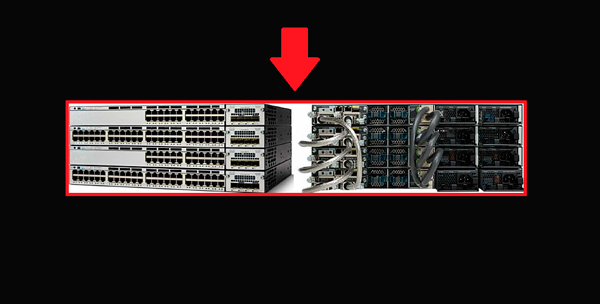
They have been designed to form the core or trunk of a medium-sized network. They have the function to provide high performance and advanced functionality . In addition, it offers a level 3 IP routing , which makes it different from perimeter switches .
The main features of this type are the following:
- It has advanced features of level 2 configuration.
- It usually offers from 24 to 48 fixed ports with 10/100 standards with RJ-connectors. Four. Five.
- It presents some modular ports for Gigabit Ethernet and 10 GbE for cables and optical fibers.
- Levels 2/3 .
- It allows to cover advanced level switching functions
- Provides routing and management functions in the level 3 .
- It allows to expand its capabilities through the switch application .
High-performance trunk switches
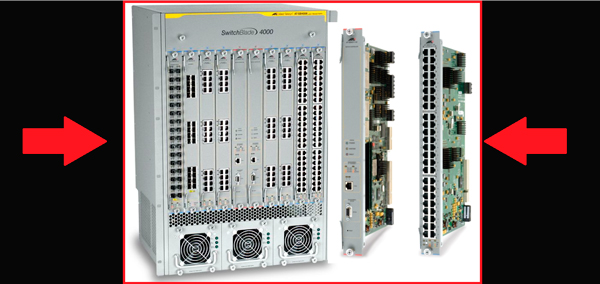
These switch types offer high performance compared to all previous . The usual format is chassis type where the required modules are installed. It is usually used in large corporate or campus networks. Even in some occasions are used by operators to build their metropolitan networks .
Among the most important features of these switches are the following: